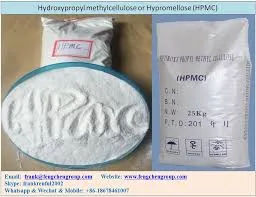
Oct . 15, 2024 03:55 Back to list
Properties and Applications of Hydroxyethyl Cellulose in Various Industries
Exploring Hydroxyethyl Cellulose (HEC) Properties and Applications
Hydroxyethyl cellulose (HEC) is a water-soluble polymer derived from natural cellulose, widely used across various industries due to its unique properties and versatility. As a member of the cellulose ether family, HEC is characterized by the substitution of hydroxyl groups with hydroxyethyl groups, which significantly enhances its solubility in water and modifies its physical properties. This article will delve into the structure, properties, and numerous applications of HEC, illustrating its importance in modern formulations.
Structure and Properties
The chemical structure of hydroxyethyl cellulose is derived from cellulose, a natural polysaccharide found in the cell walls of plants. By introducing hydroxyethyl groups into the cellulose backbone, HEC acquires several key properties. It is a white, odorless powder that is soluble in cold or hot water, forming a viscous, gel-like solution. The degree of substitution, or the number of hydroxyl groups replaced by hydroxyethyl groups, can be adjusted during synthesis, allowing for a range of viscosities and functionalities tailored for specific applications.
HEC showcases excellent film-forming capacity, adhesion, and water retention, along with a high level of chemical stability. It is non-ionic, which means it does not interact with ionic compounds, making it a compatible additive in various formulations. The viscosity of HEC solutions is highly dependent on concentration and temperature, presenting opportunities for its use in both thickened and thin solutions.
Applications
Given its desirable properties, hydroxyethyl cellulose finds extensive applications across several industries, including pharmaceuticals, cosmetics, food, paints, and construction.
hydroxyethyl cellulose hec

1. Pharmaceuticals In the pharmaceutical industry, HEC is often used as a thickening agent in topical creams and gels, providing an ideal texture without greasiness. Its ability to hold moisture makes it valuable in hydrophilic ointments and suspensions, enhancing drug delivery. Additionally, HEC acts as a stabilizer for emulsions, ensuring uniformity in formulations.
2. Cosmetics HEC is widely employed in the cosmetic industry for formulating shampoos, lotions, and creams. Its thickening properties enhance the sensory feel and application of products, while its ability to form a film on the skin or hair can improve product performance, leading to a smoother application and longer-lasting effects. Moreover, HEC serves as a binding agent in makeup formulations, providing excellent texture and stability.
3. Food Industry In the food industry, HEC is used as a food additive for its thickening and stabilizing properties. It can improve mouthfeel and viscosity in sauces, dressings, and dairy products. HEC is recognized as a safe ingredient by food safety authorities, making it a popular choice for enhancing texture and consistency in a wide variety of culinary applications.
4. Construction In construction, HEC is utilized as a thickener and water retention agent in cement and gypsum-based materials. It improves the workability of mortars and plasters, enhancing adhesion and reducing the risk of cracking during drying. The water-retaining properties of HEC help to prolong the open time of adhesives, allowing for better application in construction projects.
5. Paints and Coatings HEC is employed in the formulation of water-based paints and coatings due to its thickening and stabilizing properties. It facilitates the suspension of pigments and helps achieve a uniform consistency, contributing to the final product's durability and application performance.
Conclusion
Hydroxyethyl cellulose stands out as a multifunctional ingredient with significant implications across various sectors. Its unique properties enable it to serve diverse roles, from enhancing the texture and effectiveness of pharmaceuticals and cosmetics to improving the stability and application of foods, paints, and construction materials. As industries continue to seek sustainable and effective solutions, HEC's role is likely to expand, reinforcing its importance as a vital ingredient in modern formulations. The future of hydroxyethyl cellulose is promising, with ongoing research focusing on innovative applications and enhanced formulations that cater to the evolving needs of consumers and industries alike.
-
Versatile Hpmc Uses in Different Industries
NewsJun.19,2025
-
Redispersible Powder's Role in Enhancing Durability of Construction Products
NewsJun.19,2025
-
Hydroxyethyl Cellulose Applications Driving Green Industrial Processes
NewsJun.19,2025
-
Exploring Different Redispersible Polymer Powder
NewsJun.19,2025
-
Choosing the Right Mortar Bonding Agent
NewsJun.19,2025
-
Applications and Significance of China Hpmc in Modern Industries
NewsJun.19,2025







